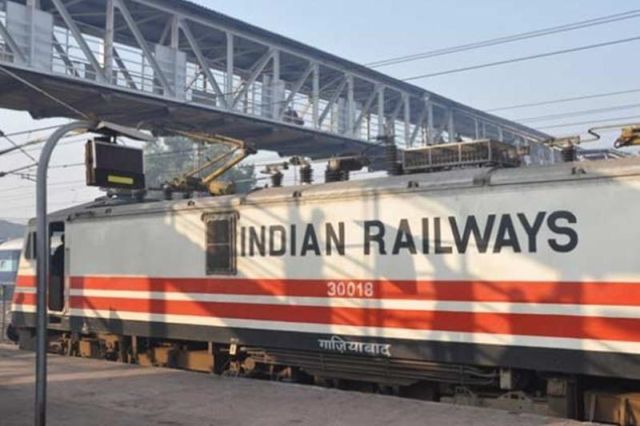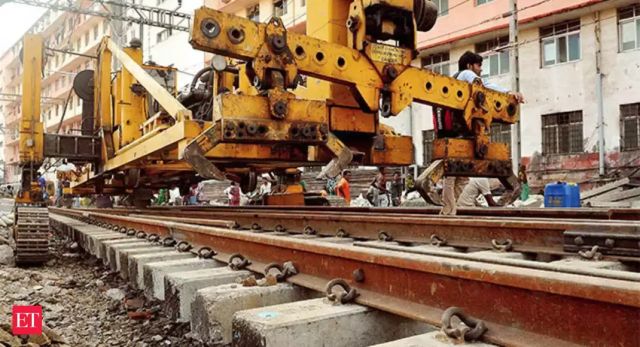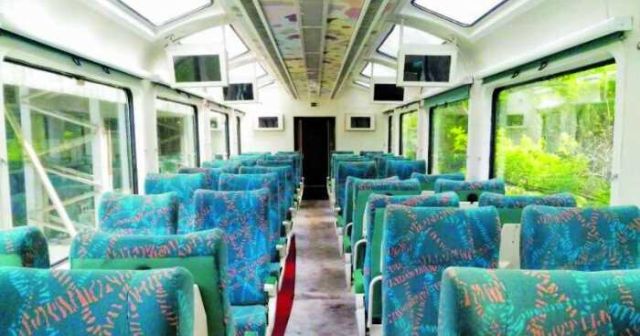
by admin | May 25, 2021 | Corporate, Corporate Governance, Markets, Technology
 By Arun Kumar Das,
By Arun Kumar Das,
New Delhi : Railways will try Japanese technology in bio-toilets, which is different from those being used here, at a few selected stations as a pilot project to ascertain its efficiency in the Indian system.
While one Japanese bio-toilet is already operational at Madgaon station in Konkan railway route, two more such toilets will be installed in the capital and Varanasi stations. Japan will give 150 bio-toilets for free as per the pilot project and all these will be installed at various stations and not in trains.
The use of Japanese technology for bio-toilets will depend upon the results of the pilot project, said the official.
Japanese bio-toilet technology is different from the ones used on Indian Railways. It is based on sawdust and special churning system to decompose the faecal matters in toilet tank, while the Indian technology depends on bacteria-driven process.
The national transporter is addressing the biggest complaint that passengers have with its trains and stations — toilets. The public transporter has faced public criticism for stinking toilets, especially in long-distance trains.
A Comptroller and Auditor General of India (CAG) report in 2017 states that foul smell was found emanating from as many as 223 bio-toilets. Inspection indicated a problem with the flushing system and inadequate water supply.
Smooth functioning of toilets is very essential for Indian Railways as some train journey lasts for 30 to 40 hours.Besides, Indian Railways also plans to test hybrid toilets — bio-vacs — which are bio-toilets with the vacuum flush facility. It is procuring 2,000 bio-vacuum hybrid toilets for 500 coaches and will scale up depending on the response.
Vacuum system reduces use of water considerably in flushing of toilets.
Keeping the toilets glitch-free is a constant struggle for the Railways, with the loos being choked with litter, plastic bottles, sanitary napkins and other inorganic waste.
The Railways aims to complete the installation of bio-toilets in all coaches by March 2019. The bio toilets were fitted first in new coaches and then retrofitted in the old ones. This is done at railway workshops in Mumbai’s Parel, Bhopal and Jhansi.
Railways has set a high target of installing 90,000 bio-toilets in 22,500 coaches in the current fiscal.
(Arun Kumar Das is Delhi-based freelance journalist. He can be reached at akdas2005@gmail.com )
—IANS

by admin | May 25, 2021 | Corporate, Corporate finance, Corporate Governance
 By Arun Kumar Das,
By Arun Kumar Das,
New Delhi : In view of recent mishaps, the Indian Railways has undertaken a massive, third-party audit exercise of critical bridges across the country to get an independent assessment of these crucial links in the rail network.
A total of 4,835 bridges have been identified for the third-party audit that is to be carried out with the help of international consultants, according to a senior Railway Ministry official.
“The international consultants will be selected through an open tender process to carry out the third-party audit,” he told IANS.
There are a total of 147,523 bridges in the country’s vast rail network – one of the largest in the world. Out of these, 700 are classified as “important bridges”, 12,085 are described as “major” ones, and 134,738 are “minor” bridges.
There are 37,689 bridges which are more than 100 years old. In last five years, 3,758 rail bridges have been repaired or rebuilt and 900 more have been earmarked for strengthening during the current fiscal year.
While the present system of inspection of bridges is considered adequate, “keeping in view the recent incidents of part collapse of rail bridges, it has been decided to conduct the third-party audit of these bridges”, the official said.
Accordingly, all zones have been instructed to carry out a one-time third-party technical audit of the bridges, he added.
There is a well-established system of auditing of bridges in which all the bridges are inspected twice a year — once before onset of the monsoon and another after the rainy season — by designated Railways officials.
Necessary corrective action is taken based on the condition assessed during the inspections, the official told IANS, adding that the third-party audit will strengthen rail bridges to ensure safety.
Out of the 4,835 bridges identified for the independent safety audit, 2,288 are foot over-bridges, 71 are mega bridges and 56 are rail flyovers. Some 94 are more than 80 years old.
Besides the inspection of bridges, track renewal is also going on full steam to prevent derailments. The Railways has given safety top priority status this year to make train operations mishap-free.
(Arun Kumar Das can be contacted at akdas2005@gmail.com)
—IANS

by admin | May 25, 2021 | Corporate, Corporate Governance
 By Arun Kumar Das,
By Arun Kumar Das,
New Delhi : In a first, Indian Railways is set to opt for the reverse auction method to decide on its wagon tender as 13 players have entered the race to manufacture 21,758 wagons at an estimated cost of Rs 5,600 crore — the largest wagon order ever for the national transporter.
The order includes about nine types of wagons, including covered, flat, open, brake van and regular ones, to be supplied by the successful bidders in the next two years.
“The Railways will get about 7,000 wagons in the first six months after awarding the contract. It is for the first time that wagon tender will be decided through reverse auction,” a senior Railway Ministry official told IANS.
In a reverse auction, the sellers compete to obtain business and prices typically decrease as the sellers underbid each other after the lowest price is made public.
The official said the reverse auction — to be carried out online — ensures transparency and the most competitive price for the purchase as the order of more than 21,000 wagons is largest so far in one go.
Major players in wagon manufacturing, including Titagarh, Cimmco, Texmaco, Jupitor, Besco and Jindal Rail Infrastructure, are among 13 bidders who had entered the race to bag the massive contract.
The technical bids were opened last week and are currently being scrutinised at the Research Design and Standards Organisation (RDSO) for eligibility criteria. This will be followed by the financial bid – and, finally, the reverse bidding will decide the contract.
The Railways has a fleet of about 2.5 lakh wagons. Wagon demand witnesses increase during the peak season between December to March when the transportation of foodgrain, fertiliser and cement goes up. Loadings of coal, iron ore and steel continue round the year.
(Arun Kumar Das can be contacted at akdas2005@gmail.com)
—IANS

by admin | May 25, 2021 | Corporate, Corporate Buzz
 By Arun Kumar Das,
By Arun Kumar Das,
New Delhi : The Dedicated Freight Corridor Corporation is gearing up to set up more than 100 railway stations and terminals — all of them “specially designed” — along the 3,360-km-long, much-delayed network linking the eastern and western seaboards to the northern heartland.
Besides, the dedicated freight corridor, known as DFC, will have as many as 12 private freight terminals, 15 private sidings and 10 goods sheds to cater to over 300 million tonnes of traffic a year from 2020-21.
Designs of these new DFC buildings will be influenced by local culture and architecture so that they become iconic structures of the area’s skyline, a senior official of the Corporation said.
“Special care has been taken that all the station buildings reflect the heritage of the region,” the official told IANS, not wishing to be identified.
Passing through nine states and 60 districts, the Rs 81,459 crore project will have 48 stations and junctions along the Western DFC and 58 in the Eastern DFC.
While the Western DFC will cover 1,504 km from Jawaharlal Nehru Port Trust near Navi Mumbai to Dadri in Uttar Pradesh, traversing through Vadodara-Ahmedabad-Palanpur-Phulera-Rewari, the Eastern DFC covers 1,856 km from Ludhiana in Punjab to Dankuni, near Kolkata in West Bengal, and will traverse the states of Haryana, Uttar Pradesh, Bihar and Jharkhand.
“Many private players have shown interest to build multi-modal logistics parks and terminals along the corridor to facilitate value addition — including packaging, labelling, retailing and transportation of goods on the dedicated route,” the official said.
All the newly-designed station buildings are expected to be ready before the corridor becomes operational in 2020-21.
There is a focus on station buildings as economic activities get a boost around the rail stations and terminals.
The Western DFC — a section of which (between Ateli in Haryana and Phulera in Rajasthan) opened for a trial run on August 15 — is expected to largely carry petroleum products, imported fertilisers and coal besides steel and iron among others in double-stack containers.
According to initial estimate, Western DFC will carry about 152.24 milliion tonnes (MT) of goods in 2020-21.
The Eastern DFC aims to speed up the movement of coal, cement, fertilisers, foodgrain and general goods, among others. The expected traffic on the Eastern DFC is 153.23 MT in 2020-21.
The Western and Eastern DFCs — both of which will be fully electrified — will intersect at Dadri, near Delhi.
Also, in a first for Indian Railways, there will be a time table for freight trains once the DFCs are operational.
The eastern wing of the DFC is being funded by the World Bank and western side is being financed by the Japanese International Cooperation Agency, or JICA.
(Arun Kumar Das can be contacted at akdas2005@gmail.com )
—IANS

by admin | May 25, 2021 | Corporate, Corporate Governance, Economy, News, Politics
 By Arun Kumar Das,
By Arun Kumar Das,
New Delhi : Awaiting the return of normalcy — as well as tourists — in the Kashmir Valley, an indigenously-built vistadome (glass-top) railway coach, though ready to run, has been docked at Badgam station for months.
The 40-seater vistadome coach was announced in June last year by then Railway Minister Suresh Prabhu and was manufactured by the Integral Coach Factory in Chennai at an estimated cost of abut Rs 4 crore.
The see-through air-conditioned coach with large glass windows, glass roof, observation lounge and rotatable seats, a first such service in the state, aims to facilitate passengers to experience the breathtakingly beautiful locations and sites en route the 135 km from Banihal to Baramulla.
Keeping tourists in mind the seats are attached with trays similar to those in airplanes for eating and passengers can order light meals to be made available during the journey.
The vistadome coach travelled all the way and was delivered at Badgam this April. It was expected to be made operational in May, allowing visitors to Kashmir to get a delightful view of the picturesque landscape of the Valley.
“The prevailing situation is not right now to press vistadome coach into service. It will be operational once the conditions improve,” a senior Railway Ministry official told IANS, not wishing to be identified.
The specially-designed vistadome coach also has double-wide reclining seats which can be rotated 360 degrees for a panoramic view of the surroundings. It also has glass-domed ceilings, automatic sliding doors, luggage racks, multiple LED screens for entertainment and a GPS-enabled information system.
A step towards boosting tourism, the vistadome coach was first introduced for Araku valley in Vishakapatnam-Kirandul passenger train in April last year, offering a panoramic view of the hills, valleys and an exhilarating experience to tourists as it passes through tunnels.
The second vistadome coach was attached to the Jan Shatabdi between Dadar and Madgaon, on Mumbai-Goa route, in September last year.
(Arun Kumar Das can be contacted at akdas2005@gmail.com)
—IANS




